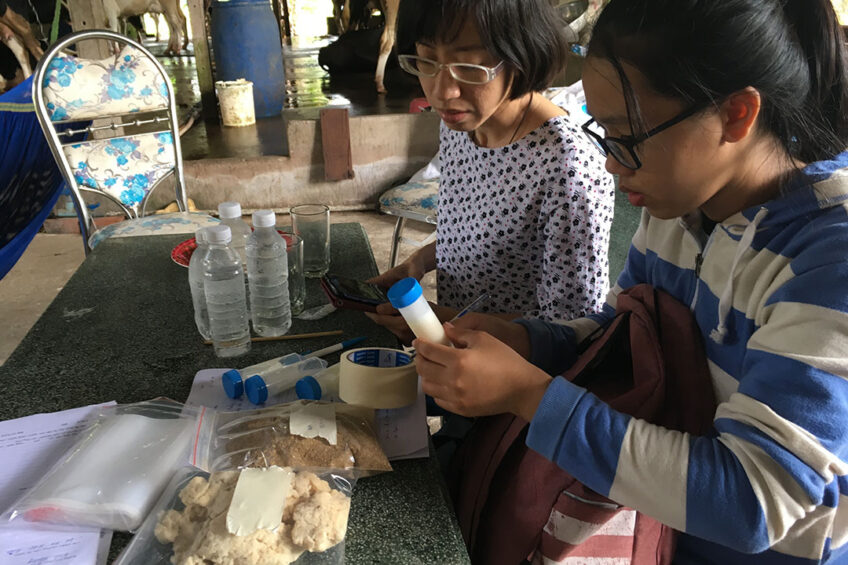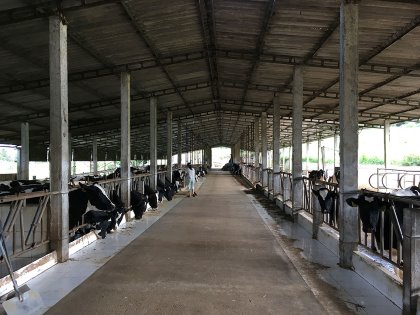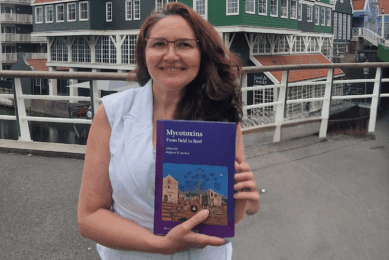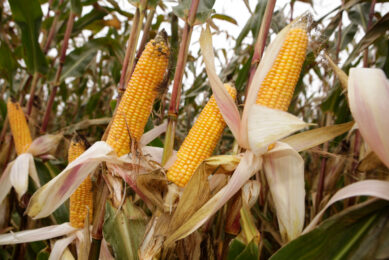Vietnam to focus on feed and food safety

Like many countries in Asia, Vietnamese demand for dairy products is growing, driven by rising incomes and increasing awareness of the nutritional value dairy foods bring to the diet. This is why Vietnamese smallholders are stepping up feed and food safety.
Public/private partnerships in Vietnam are showing how education combined with technology can help small scale dairy farmers support feed-to-food safety. One example of such collaboration is a project Trouw Nutrition, a Nutreco company, initiated in June 2018 to help small-scale dairy farmers reduce aflatoxin risk in milk. The programme complements a larger initiative, the Vietnam Community Development Project implemented by the Vietnamese National Department of Livestock Production and Vietnam Dairy Association, part of the Ministry of Agriculture and Rural Development (MARD). The aflatoxin risk management programme is introducing small-scale farmer protocols to reduce aflatoxin contamination in feed and consequently reduce contamination risk in milk products.

Vietnam: still a small producer
Like many countries in Asia, Vietnamese demand for dairy products is growing, driven by rising incomes and increasing awareness of the nutritional value dairy foods bring to the diet, particularly for infants and the elderly. According to the 2017 IFCN Dairy Report, 21,112 dairy farms in Vietnam produced 0.77 million tonnes ECM of milk in 2016, representing an 18.5% per year increase between 2011 and 2016. On a global level, Vietnam is still a relatively small dairy producer, ranking 87th in world milk production in 2016. As demand grows, higher production levels can also present food safety concerns. Widely publicised media accounts of incidents such as melamine found in Chinese infant formula in 2008 have called for more attention to feed safety. Vietnam’s Livestock Development Strategy approved by the Prime Minister to 2020, gives priority to the improvement of quality, food safety and hygiene for the nation’s domestic milk source. Domestically produced milk is projected to account for 40% of Vietnam’s total milk consumption by 2020.

Bringing aflatoxin risk into focus
Recently, food safety has been a significant challenge for livestock production and the Vietnamese government has been considering how to control the quality, toxic residues and chemical contaminants in meat, eggs, milk and dairy products. The Department of Livestock and Production developed a proposal requesting foreign partners’ support to improve control of toxic residues and hazardous chemicals in the dairy industry. One area of concern related to feed safety is aflatoxin risk. Aflatoxins are mycotoxins produced by 2 species of Aspergillus, a fungus found particularly in areas with hot and humid climates. Known to be genotoxic and carcinogenic, exposure to aflatoxins through food should be kept as low as possible. Several types of aflatoxins are produced naturally and can occur in food as well as animal feed ingredients. Aflatoxin M1 is a major metabolite of aflatoxin B1 in humans and animals, which may be present in milk from animals fed with aflatoxin B1 contaminated feed. Aflatoxin B1 is the most common aflatoxin in food and feed and among the most potent genotoxic and carcinogenic aflatoxins. Aflatoxins may be found in ground nuts, tree nuts, maize, rice, figs and other dried foods, spices, crude vegetable oils and cocoa beans, as a result of fungal contamination. Aflatoxins can proliferate in the field before harvest, emerge during transport of feed ingredients or develop during feed storage. Contamination presents a 2-fold danger in small scale dairy production. In addition to negatively impacting production efficiencies, aflatoxins also pose a human health risk as 1-6% of a cow’s intake is transferred into her milk. Aflatoxin intake presents a special concern for children whose diets are largely composed of dairy and dairy-derived products.
Mycotoxin Knowledge Centre: Find out which regions are most affected by mycotoxins and learn about the risk levels.. check it out
Using a baseline assessment
From the outset, it was important for parties involved in the aflatoxin risk management project to understand the presence and prevalence of aflatoxins in feed ingredients and milk. Vietnam has imposed stringent thresholds establishing maximum limits for aflatoxins that are 10 times higher than the EU limit and on par with U.S. limits. Authorities sought a partner who could help assess the levels of aflatoxins in feed ingredients and milk and also implement procedures to ensure consistent quality and safety. Trouw Nutrition conducted a baseline farm study and analyses using its proprietary on-site mycotoxin testing technologies. The Mycomaster On-site Adviser tests for the presence of aflatoxins not only in crops, but also in milk. Trouw Nutrition has collected and analysed thousands of samples around the globe, analysing and comparing the presence and prevalence of common mycotoxins. For example, in 2017 and 2018, Trouw Nutrition’s global crop analysis database reported an average of 49% of Asian crops showed a positive rate for aflatoxins. Mycotoxin detection and analysis technologies evaluated smallholder feed and milk samples. Preliminary results showed that while aflatoxin was present in some milk samples, levels were below the Vietnamese legal limit in the small study conducted. Contamination levels differed from farm to farm and from day to day. The small size of the sample suggests additional tests be conducted to more thoroughly evaluate aflatoxin risk. Systematic control and mitigation measures were recommended to further reduce the risk of aflatoxin contamination.
Education on proper storage
Education was an important first step for farmers participating in the project. Workshops were held for approximately 120 farmers who typically owned between two and 40 cows. Content focused on raising farmers’ awareness of the human health risks associated with high and/or chronic aflatoxin contamination in small-scale and home-based milk production environments. Workshops also discussed productivity losses that aflatoxins can cause and the economic consequences associated with lost productivity. Because aflatoxins tend to proliferate in poor storage conditions, the workshops covered proper storage as a primary practice for limiting aflatoxin contamination on the farm. In many cases, it is neither practical nor feasible for farmers to get feed or milk samples to a lab for testing. By bringing the Mycomaster On-Site Adviser technology to the dairy farm, farmers are able to evaluate their feed for a wide range of mycotoxins, including aflatoxins, and review results in just 15 minutes. Once the information is available, farmers can implement a strategy to address specific mycotoxin threats. While the project is based in Vietnam, the nation’s farmers also receive indirect support from dairy production leaders in other parts of the world including the Trouw Nutrition research centres headquartered in the Netherlands. Working in partnership, this public and private collaboration is bringing global research, in-the-field technology and on-site farm advisers together to help Vietnamese dairy farmers produce safe, high-quality milk and dairy products for Vietnam’s citizens.
Join 13,000+ subscribers
Subscribe to our newsletter to stay updated about all the need-to-know content in the dairy sector, two times a week.










